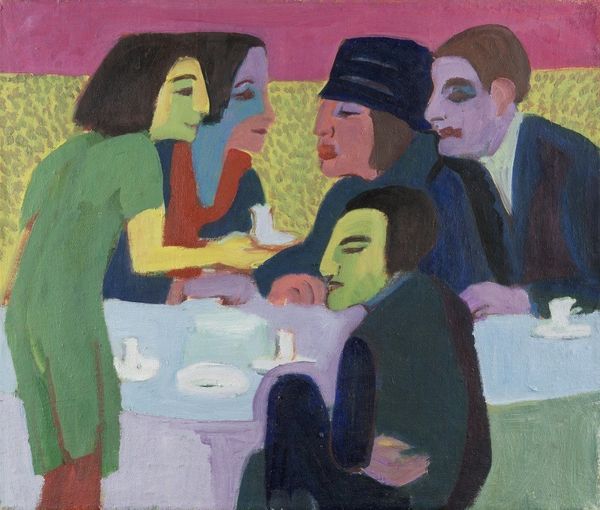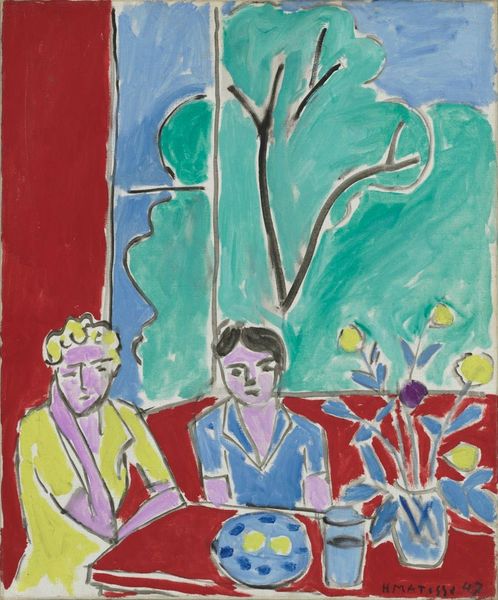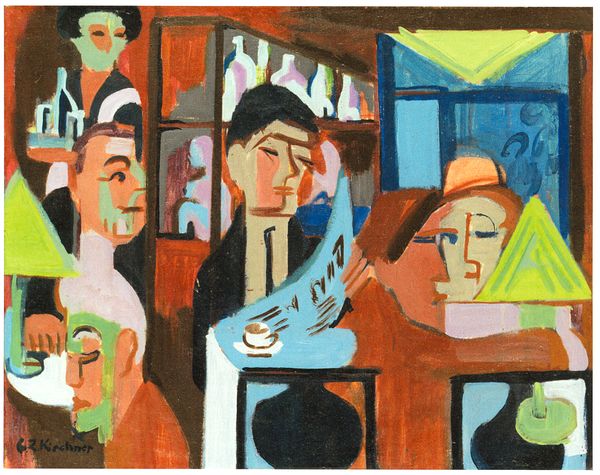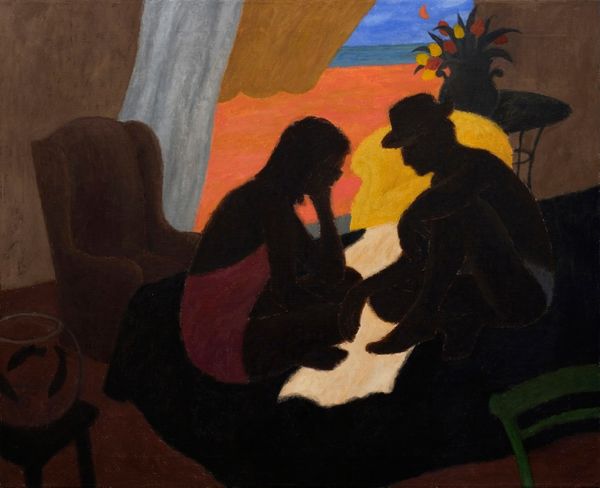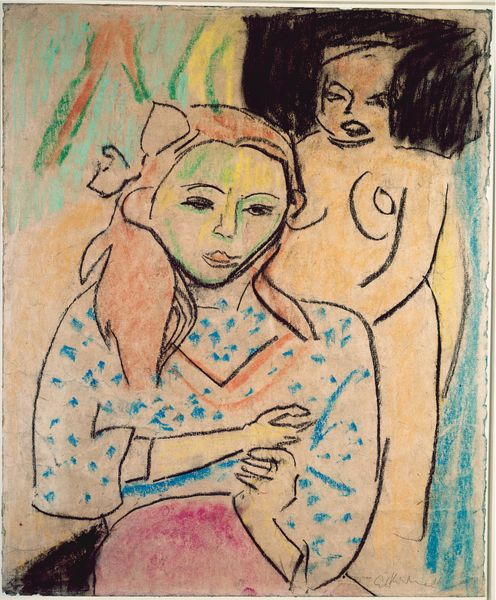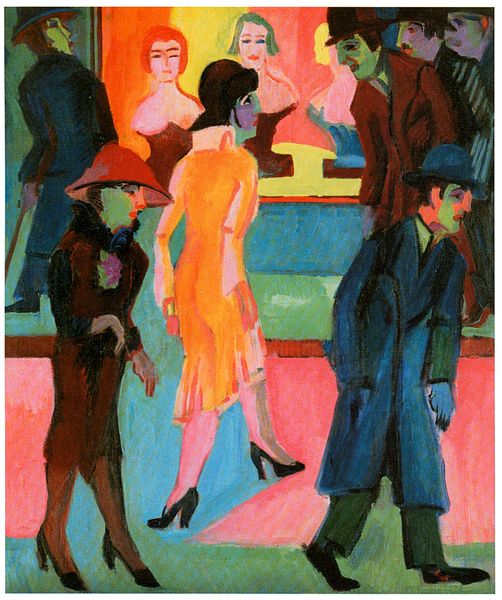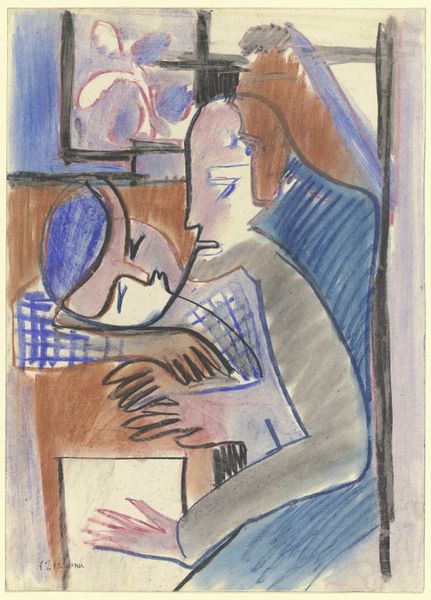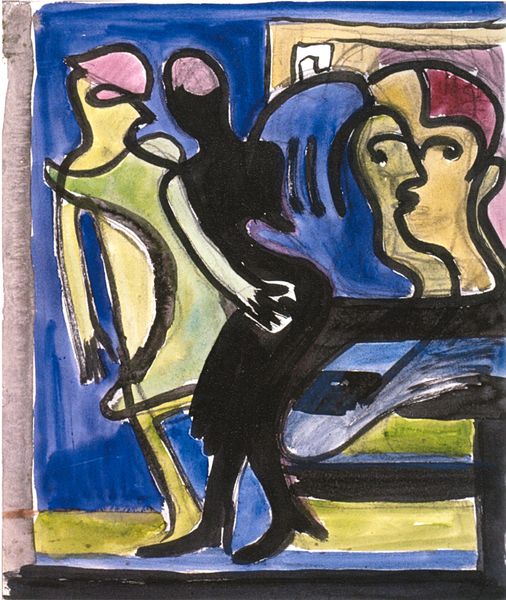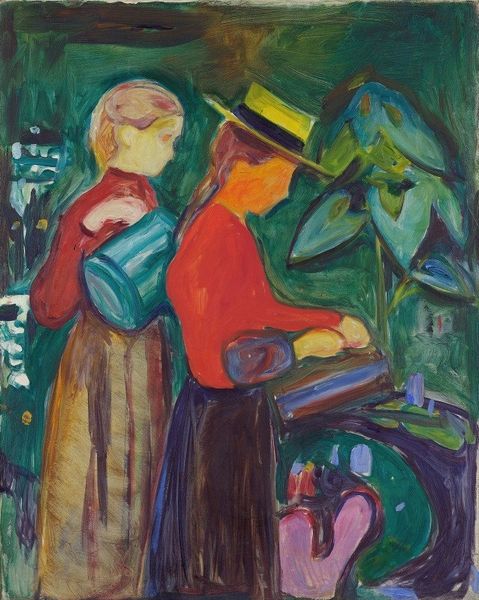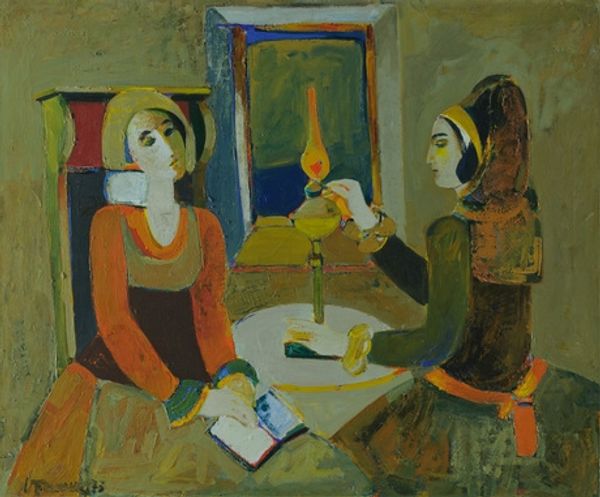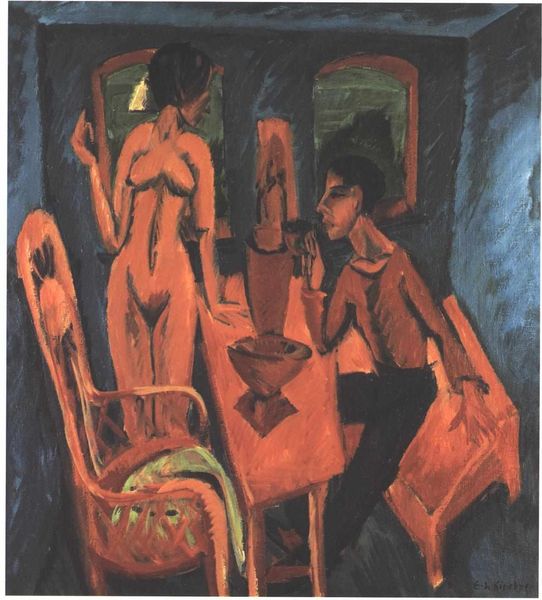
painting, oil-paint
#
portrait
#
painting
#
oil-paint
#
figuration
#
expressionism
#
cityscape
#
portrait art
Dimensions: 64 x 61 cm
Copyright: Public domain
Curator: Ernst Ludwig Kirchner's "Two Women in a Cafe," painted in 1929, presents a seemingly simple scene but carries a weight of social observation. Editor: My initial impression is one of muted tension. The flattened perspective and unusual color choices create a slightly unsettling atmosphere. Curator: Kirchner, as an Expressionist, was deeply concerned with capturing not just the visual appearance of a scene, but also its psychological and social undercurrents. He sought to portray the alienation and fragmentation of modern life. Consider, for example, the application of the oil paint. The strokes lack finesse. This could represent his attitude towards painting: something produced and readily consumed. Editor: Precisely. Let's unpack the formal elements that convey this. Note the dissonant color palette – that pale yellow skin against the dominant blues and the clash with pink is deliberate. These choices actively work against harmony or easy beauty. It really grabs my attention. The women almost seem trapped, as if they can not leave due to external (likely class-based) conditions. Curator: Exactly. The café, ostensibly a site of leisure, becomes a stage for social performance. The material reality of such a performance is in full display. Each of the characters could be seen as manufactured or even commodified. This really highlights the tensions of consumer society in Weimar Germany. Editor: And what about the composition itself? The table, oddly circular, cuts the figures, suggesting disruption. The lack of depth flattens the characters, too, presenting their isolation and lack of connection. And note how one character looks away while the other stares towards them. Their gazes imply miscommunication or unequal relationships. Curator: True. These visual choices challenge the viewer to consider the socio-economic forces shaping individuals in an increasingly industrialized world, particularly the place and status of these women. Editor: Considering how successfully he conveyed such discomfort through shape and color, this makes the piece so much more meaningful to analyze.
Comments
No comments
Be the first to comment and join the conversation on the ultimate creative platform.
